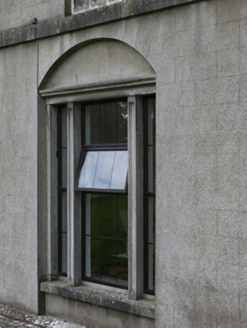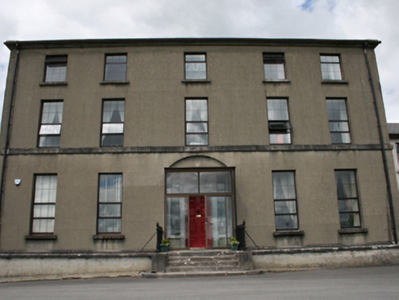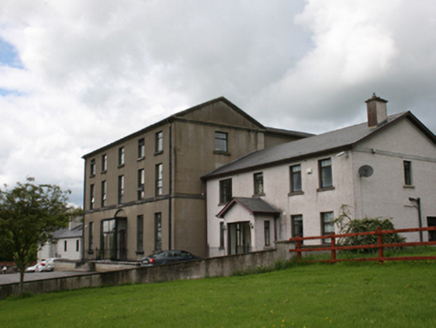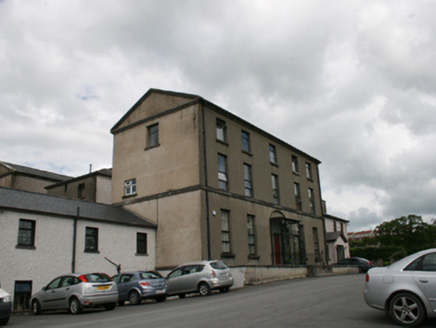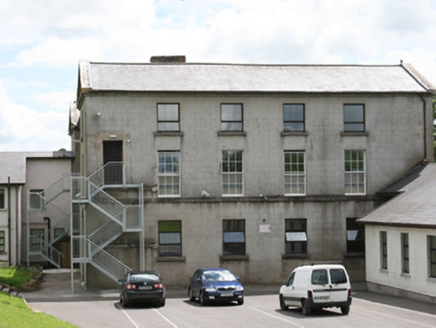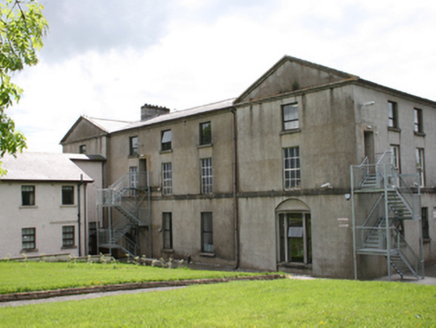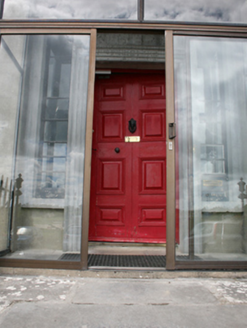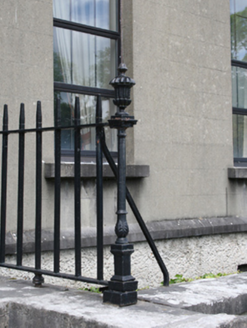Survey Data
Reg No
40001142
Rating
National
Categories of Special Interest
Architectural, Historical, Social
Original Use
School
In Use As
School
Date
1815 - 1820
Coordinates
241926, 304079
Date Recorded
06/06/2012
Date Updated
--/--/--
Description
Detached neo-classical E-plan five-bay three-storey over basement school, built 1819, comprising gable-ended entrance block linked to parallel three-storey block of equal volume, without basement, forming formal side elevation to the east, flanked by pedimented gables, with a lower hip-roofed two-storey return to rear. Recent extension to the east. Pitched slate roofs with cast-iron and uPVC rainwater goods. Smooth-rendered ruled-and-lined walls with cut-limestone string course to ground level plinth and first floor cill level, cut-limestone eaves corbel and gable pediments. Roughcast rendered basement walls to front. Square-headed openings in diminishing heights from ground to attic level with limestone cills and aluminium windows. Six-over-six sliding-sash windows to first floor of north elevation. Square-headed tripartite window at ground level of north-east gable in segmental recess with aluminium windows to centre and side lights divided by panelled pilaster mullions and moulded head profile. Tripartite entrance door opening with limestone surround set within elliptical-headed recess, side-lights and double-leaf panelled door. Smooth-rendered ruled-and-lined plinth wall with ashlar coping, ashlar steps on brick cantilever to front door with cast-iron railings. Courtyard and former outbuildings to the west
Appraisal
The Cavan Royal School was founded in 1608 as one of five Royal Schools established by King James I. The present purpose-built neo-Classical school was designed by Francis Johnston and built at a cost of £7,553 under the supervision of John Bowden. The design of austere simplicity is well proportioned and balanced in all its three principal elevations. The eastern elevation is articulated by pedimented end bays with tripartite windows of precise architectural detail, one of which survives. Despite many changes which have devalued this excellent design, the school remains a very important example from the work of one of Ireland's leading neo-classical architects. As an institution the school is of great historical significance and the building deepens our insight into the education of the Protestant ruling class from the begining of the nineteenth century.
